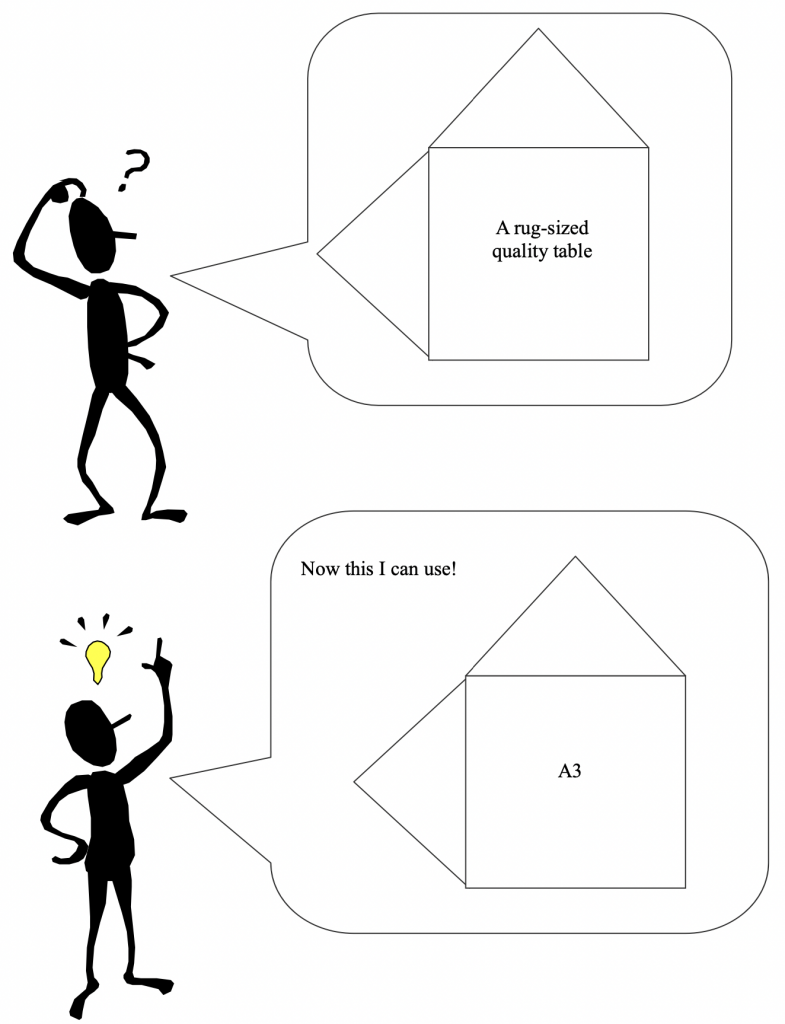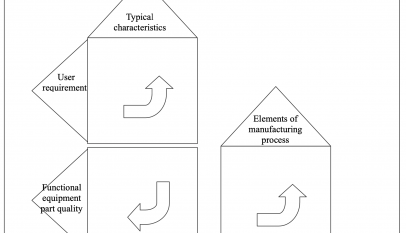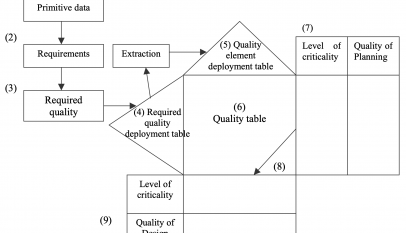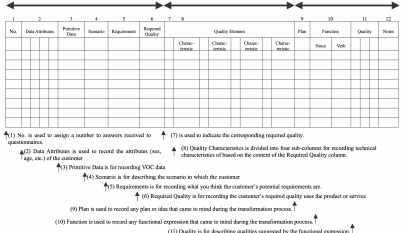Many people have the idea that a quality table has to be some gigantic matrix combining a required quality deployment table and a quality characteristic deployment table. Quality tables, however, are not created for their own sake. They are tools to be used for an express purpose, and to that end should be created so that they can be used for the intended purpose.
Using a quality table is the same as using any other form of well-organized information. In other words, the data is useful only because it is well-organized. If a required quality deployment table is well-made, it immediately fulfills its role as a tool for understanding the market. A well-organized required quality deployment table can be used to distinguish known required quality from unknown required quality. Any required quality not shown in the required quality deployment table is an unknown required quality. A technical deployment table can be used to review currently known technologies, and to determine what technologies are presently available in a product.
In order to utilize the available accumulated data, it is necessary to devise a format that will make the quality table useful. A useful format for providing an overall view is probably no larger than an A3-size sheet of paper. One of the first things you should think about when creating a quality table is how to devise an easy-to-use format.
It is also important to understand the concept of deployment if you want to devise easy-to-use quality tables. If the required quality and quality characteristic deployment tables have been properly deployed, it is an easy matter to create a quality table that permits an overall view. If you understand the concept of levels of abstraction and have the corresponding elements well organized in your mind, you should have no problem creating easy-to-use quality tables right from the start.
Irrespective of how many levels the required quality and quality element deployment tables are deployed to, as long as they are properly done, primary level items from both tables can be used in the creation of a quality table of manageable size. The secondary level items can also be included, provided they aren’t too numerous.
Furthermore, the first level quality table can be used to establish planning quality, and critical required quality and quality element items can be extracted to create a secondary level quality table of manageable size. The point is to keep in mind the three principles of QFD in the creation of easy-to-use quality tables.

















